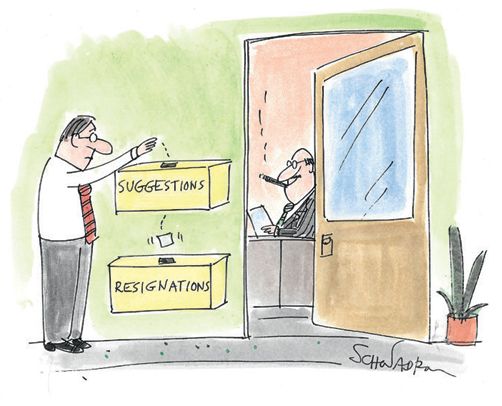Hillary Clinton won the popular vote by more than 2.8m ballots in 2016. A shift of roughly 40,000 votes in the swing states of Wisconsin, Michigan and Pennsylvania would have given her the Electoral College victory that went to Donald Trump.
What happened? Of many possible explanations, two matter most for the democratic future of the United States. One is that the Democrats lost the support of white working-class voters, particularly men, by emphasising the “identity politics” of minorities and women instead of economic grievances. A second is that they lost through vote suppression by Republican officials in the swing states.
The two are not entirely separate: history shows there have always been links between America’s racial politics and the suppression of voting rights. The longstanding deficiencies of US electoral systems in fostering full and fair participation by all voters have deepened since the Supreme Court invalidated part of the landmark 1965 Voting Rights Act in Shelby Co. vs Holder (2013).
Lurking under putatively colour-blind measures to make voting more difficult is a different “identity politics”: the resurgence of the belief that to be “great,” America must be a predominantly white-governed nation. This was abetted far more by Clinton’s failure to make a strong case for aid to disadvantaged minorities than it was spurred by any special advocacy for them.
In Shelby County, the Supreme Court declared antiquated and invalid the section of the Voting Rights Act that triggered Justice Department reviews of electoral systems in states with sordid histories of vote suppression. After the 2013 decision, 14 Republican-controlled states enacted new measures that even some proponents acknowledged were aimed at lowering the Democratic turnout—disproportionately poorer, African American, and Latino.
When a lower court struck down Wisconsin’s new strict photo ID law as unconstitutional, the state promised to provide free IDs. Remarkably, the 7th Circuit Court of Appeals bought that promise. When the state breached it, the Court ordered it to ensure that none of the estimated 300,000 voters without the ID would be prevented from voting. But Republican officials still gave voters false information about ID requirements. And in areas where voters feared they were in violation of the law, most notably strongly-Democratic Milwaukee, turnout dropped by 13 per cent on 2012—a difference of 41,000 votes. Trump carried Wisconsin by less than 23,000.
Poll workers in Michigan also told voters they had to show state-approved IDs but failed to offer an alternative—completing an affidavit swearing to their identity. It is impossible to know how many Democratic voters were discouraged by this, but Trump carried Michigan by less than 11,000 votes.
In other swing states which Trump carried more emphatically, vote suppression was rampant. After commissioning a study to determine which racial groups used which voting methods, North Carolina legislators sought to curb those favoured by African Americans. Though the federal courts invalidated much of that law, Republican-controlled local election boards still cut polling stations and voting hours in black neighbourhoods, creating long lines and dampening turnout. The election gave Republicans undivided control of 32 state legislatures and 33 governorships. Many states can be expected to keep making it harder for poorer and non-white voters, who lean Democratic, to vote in future elections.
"Many states can be expected to keep making it harder for poorer and non-white voters, who lean Democratic, to vote in future elections"These suppression tactics are plainly serious, but only succeeded because Trump energised turnout by his supporters, as Clinton singularly failed to do for hers. The fashionable diagnosis—that this was because Clinton emphasised aid to minorities, and so galvanised white opposition—is flat wrong. In fact, Clinton stressed economics. She promised to combat inequality with taxes on the wealthy, to improve Obamacare, and to stimulate job creation through infrastructure spending. She regularly expressed support for women’s rights, LGBTQ rights, disability rights, and justice for racial minorities and immigrants. But like most Democratic politicians, including Barack Obama, she did so without explicitly explaining why such preferential policies might be justified.
There is no more highly-charged question than whether US public policy should be “colour-blind” or “race conscious,” yet liberal politicians eschew defending “race conscious” policies at election time. They confine their defences to legal briefs in court cases or expert testimony in administrative hearings. No one grasps the nettle to explain how these measures are often the most effective, sometimes the only, way to achieve broader goals of fostering a prosperous, safe and well-schooled nation.
Why do they duck this fight? Research by Daniel Gillion shows that in office, Obama addressed racial issues less often than his Democratic predecessors—but that when he did, he spurred stronger support among African Americans and Latinos, without diminishing white support. Clinton followed Obama by presenting herself as a unifying candidate, not as someone arguing for “identity politics.” But by vacating the turf, she failed to contest Trump’s charges that her positions on minority rights were unjust. She also failed to stimulate the high African American and Latino turnout she required. By contrast, Trump’s rhetoric galvanised many white voters, both men and women.
There can be no guarantee that if Clinton had made sharper arguments for assisting minorities, she would have won. But her failure to do so, combined with the voter suppression and the racially-charged Republican rhetoric, ended up electing a candidate who has done more to invigorate white nationalism than any political figure since George C Wallace ran for the presidency in 1968. Consequently, a nation that in 2011 we called “still a house divided” has become yet more so.














